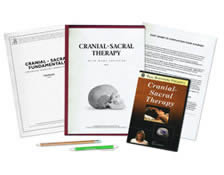Amputation of a body part is a devastating event that can follow surgery, infection, disease or trauma. Phantom pain adds even more insult to injury, by inflicting pain in a limb (or other body part) that no longer exists. Phantom pain is more common after the removal of an arm or a leg, but can also occur elsewhere, such as the breast or eye.
Symptoms
Described as tingling, itching, twisting, pulsing, cramping, pins-and needles, stabbing pains, pressure, a sense of fullness and more, phantom pain is experienced by the majority of amputees. These sensations range from mild and infrequent to severe and chronic.
Often the feelings of phantom pain are highly localized. An amputee may describe the sensation as being in a specific location, such as ‘on the bottom of the little toe’ or ‘on the right side of the shin, right below the knee, going down in a straight line.’
New amputees tend to have frequent and intense sensations several times every day, often continuously for a few hours at a time. After an amputation, the sensations typically become less frequent, less intense, and bouts of pain last for a shorter amount of time. However, many amputees report that the phantom pain never completely disappears.
Varying styles of bodywork can bring a great deal of relief to phantom pain, even more relief than western medicine’s limited treatment options.
Cause
Since the removal or loss of a limb can be so emotionally distressing, many people once presumed that phantom pain was a psychological problem. However, research has since demonstrated that phantom pain is a very real, physical phenomenon.
While the exact cause of phantom pain is still unclear, experts agree that the cause is rooted in the neural circuitry, as generated from the spinal cord and brain. It is believed that when a body part is amputated, the brain region responsible for perceiving sensation in that area begins to function abnormally, leading to the perception that the body part still exists.
Relief
While western medicine primarily offers an array of medications and surgical options to dull phantom pain, alternative medicine harbors many treasures for an amputee. A few are:
- Acupuncture – Acupuncture effectively relieves chronic pain by enhancing circulation in the affected area as well as stimulating the central nervous system.
- Biofeedback – In biofeedback, the person learns to regulate body functions such as blood pressure and skin temperature, all of which affect phantom pain.
- Hypnosis – When hypnotized, a deep state of relaxation is reached where the client is open to suggestions designed to decrease the perception of pain and increase their ability to cope with it.
Relief from a massage therapist
Massage therapists also have access to a wide range of techniques benefiting phantom pain sufferers:
- Progressive muscle relaxation – Progressive muscle relaxation (PMR) is a technique in which people consciously tense and then relax muscles. Some people who have phantom pain have anxiety about their pain, causing tension and, thus, increasing their pain. PMR can bring relief by reducing the anxiety and tension contributing to pain.
- Energy medicine – The application of Therapeutic Touch or Reiki to an amputee can change the dysfunctional energetic patterns perpetuating their pain. In addition, teaching energetic visualizations to a client can help them work with their pain at home.
- Cranial-Sacral therapy – The gentle touch of cranial-sacral therapy increases cerebrospinal fluid circulation, clearing blockages in the cranium, along the spinal cord and around the sacrum. Since phantom pain is typically viewed as abnormal brain and central nervous system processing, balancing the cranial-sacral system can bring enormous pain relief to an amputee.
- Acupressure – Based on the same principles as acupuncture, acupressure application has a unique place in relieving phantom pain. Acupressure works by stimulating qi (energy) when applying pressure to the path by which the qi travels (meridians). The stimulation of qi enhances circulation, which subsequently reduces pain. Once a therapist can identify the meridian along which the phantom pain runs, they can work with that meridian on an existing body part. Additionally, the meridians intersect the midline of the body, so stimulating a point on the right side will benefit the same point on the left, even if that left-sided location is amputated.
Due to the non-visible nature of phantom pain, the tactile approach of western medicine is at a loss for its successful treatment. While allopathic physicians may prescribe useful pain-numbing pharmaceuticals or surgically install pain-relieving devices, healthcare practitioners utilizing touch, circulation enhancement and energetic stimulation have a much greater capacity to help those afflicted with phantom pain.
References:
www.mayoclinic.org, Phantom Pain, Mayo Clinic Staff, Mayo Foundation for Medical Education and Research, November, 2005.
www.stoppain.org, Phantom and Stump Pain, University Hospital and Manhattan Campus for the Albert Einstein College of Medicine, Continuum Health Partners Inc., 2005.
www.transitiontoparenthood.com, Phantom Pain, Janelle Durham, 2004.












